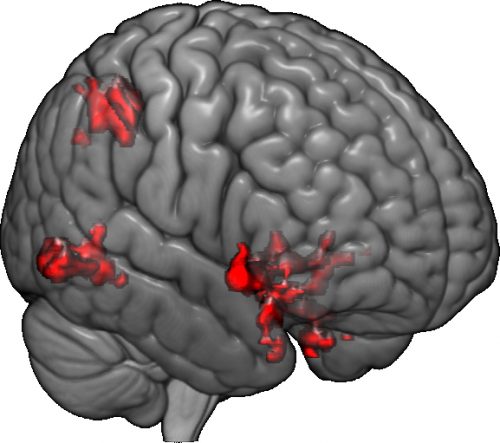Imagine you walk outside and feel raindrops. Your conclusion is to grab an umbrella because you predict it will rain. But what if the timing of those thoughts was mixed up? What if you believed that you decided to grab an umbrella even before going outside? You might then feel that you had predicted the weather. People who systematically perceive they have this ability have an exaggerated or even delusional belief about their own knowledge. This is a phenomenon studied extensively by a team of researchers led by Dr. Tyrone Cannon, Professor of Psychology at Yale.
Building on a previous study by co-author and Yale graduate student Adam Bear, the scientists decided to use a similar task “to see how it is that sometimes people feel they’ve predicted an event that has already happened,” and whether this tendency is correlated with unusual or delusional beliefs. To do so, the scientists set up a task in which participants were presented with five white squares on a screen and asked to choose which square they believed would change color. After a variable delay, a random square would change color, and the participants would answer if they predicted correctly, incorrectly, or didn’t have enough time to predict. This type of experiment is called a “postdiction” paradigm. Based on the results, the scientists saw that as the delay between predicting which square changed color and observing the actual change decreased, people showed an increase in perceived accuracy of predictions.
The probability of guessing the correct square to change color is 20%, and at longer delay intervals, participants showed accuracies around that number, which suggests that lying (or a response bias) did not play a significant role in their decision. However, as the delay decreased, perceived prediction accuracy gradually increased, spiking at a delay time of 200 milliseconds. Participants who reported having unusual beliefs (paranoia, magical thinking, clairvoyance) showed a general increase in perceived accuracy as the delay interval decreased. This means that, as the interval between prediction and observation decreases, the two often get confused and people start to believe they predicted the correct choice.
These results suggest that people who are more prone to confuse the timing of their prediction with the observed outcome are more likely to report delusional experiences. Even more strikingly, these results suggest that even control participants, people who did not report having delusional thoughts, also have the possibility to make such postdictive errors, but only when the interval is very brief. But why is there a correlation between vulnerability to postdictive errors and delusionality? “The underlying mechanism isn’t known yet and needs further work to look at both the timing part of this equation and the neural sources,” said Dr. Cannon.
The results of the study provided “an insight into how people perceptually feel they have predicted or controlled outside of their control. This mistiming between perception and willed thought has potentially a lot to do with why people develop symptoms of psychosis and come to have these more elaborate delusional beliefs”. In a way, we are all capable of having delusions, so next time you feel raindrops and take out an umbrella, take a moment to appreciate the timing between observation and umbrella.

